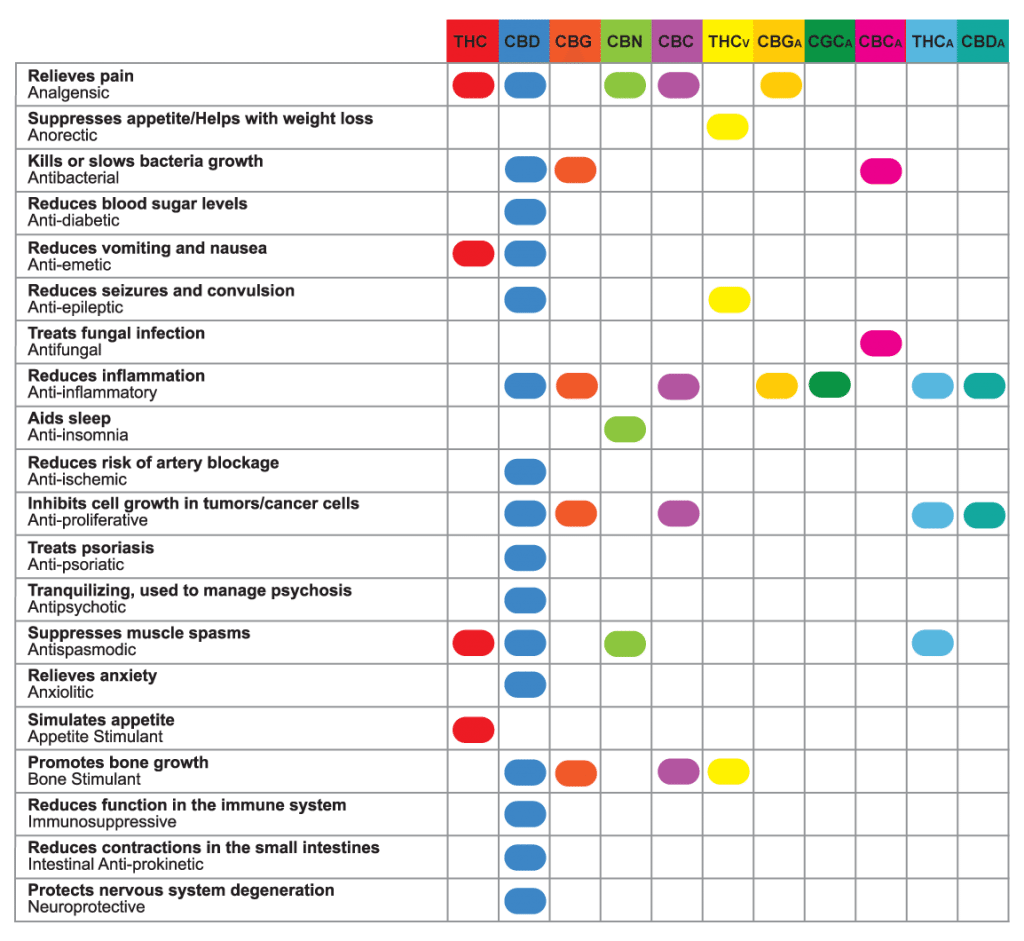entourage effect
By Dr. Barry Morrison
You may be familiar with the natural health benefits of the two primary compounds known as cannabinoids found in cannabis —that being CBD and THC. But it’s important to know that there are, in fact, more than one hundred other medicinal cannabinoids within the hemp plant. When used in conjunction, they deliver a synergistic phenomenon known as the Entourage Effect.
What is the Entourage Effect?
The Entourage Effect is the mechanism that occurs when multiple cannabis compounds work together to deliver a powerful, compounding effect. In 1998, world renowned cannabis researchers Raphael Mechoulam and Ben-Shabat stated that the endocannabinoid system demonstrated an “entourage effect”. This is where a variety of compounds and closely related molecules markedly increase their activity by working in concert. The primary endogenous cannabinoids, which are those made within our own bodies, are known as anandamide and 2-arachidonoylglycerol. They also postulated that this helped to explain how botanicals were often more effective than their isolated components. The single molecule synthesis remains the dominant model for pharmaceutical development. However the concept of plant expressed synergy has been amply demonstrated. This invokes the contributions of “minor cannabinoids” and cannabis terpenoids to the plant’s overall effect.
Dr. Ethan Russo, a world-renowned neurologist explains that each cannabis compound may enhance the natural properties of other cannabis compounds. Therefore, cannabinoids will deliver stronger and more diverse effects when coupled together than any single compound could alone. With literally hundreds of cannabinoids naturally produced within Cannabis, the variety of different synergies offered within this plant is mind boggling.
To understand just how powerful the Entourage Effect can be, and more importantly, how it can be used to improve your experience, let’s take a look at the two primary groups of cannabis compounds: cannabinoids and terpenes.
Cannabinoids and the Entourage Effect
As I mentioned earlier cannabinoids are a group of active cannabis compounds that can interact with receptors in our Endocannabinoid System (ECS) to deliver a variety of effects.
In addition to CBD and THC, scientists have identified more than 100 different cannabinoids within the cannabis plant, and many still remain unidentified.
When used in conjunction, the unique properties of each cannabinoid are enhanced through the entourage effect, naturally delivering greater effect than they would have individually.
Check out the chart below to learn about some of the primary cannabinoids and their unique properties:

Terpenes and the Entourage Effect
Terpenes are the aromatic molecules found in most fruits, plants, and herbs, including cannabis. They are the source responsible for the zesty odor of lemon, the pungent aroma of pine, and the relaxing flavor of lavender. In cannabis, terpenes are produced in the sticky resin glands of the plant and are responsible for the variety of unique aromatic secretions by different cannabis strains.
By stimulating the receptors in our olfactory system, terpenes can stimulate a variety of psychological and physiological effects. These are effects that can be highly beneficial to the body.
Comparing the Entourage Effect in Different CBD Products
When shopping for CBD, there are several types of CBD to choose from Full Spectrum, Broad Spectrum, and a CBD Isolate. Depending on which type of CBD you used, the impact the entourage effect may have varies significantly. Let’s outline the chemical profiles of each type of CBD and review how to maximize its entourage effect.

Full-Spectrum CBD
Full Spectrum CBD is produced by extracting all the cannabinoids and terpenes found present in the Cannabis plant, including THC. Because Full Spectrum CBD contains a full range of cannabinoids and terpenes, it can deliver a powerful entourage effect with benefits that will out-perform those delivered by CBD isolate.
Due to the legal status of THC in some states, Full Spectrum CBD should unfortunately only be used by those residing in states with broad cannabis laws. For those who live in a state where Cannabis is illegal, there is, fortunately, a solution.
Broad-Spectrum CBD
Now let’s talk about the Broad-Spectrum CBD it’s a bit of a mix between both the Full-Spectrum and the CBD Isolate. With its similarity to Full-Spectrum CBD, Broad-Spectrum CBD is produced by extracting all cannabinoids and terpenes from the plant; however, it then undergoes an additional processing step to completely remove all THC from the extract.
By removing THC from the extract, Broad-Spectrum CBD can deliver most of the benefits of Full-Spectrum CBD, without the strict legal regulations that accompany THC of any level.
CBD Isolate
And lastly, we have the CBD Isolate which is produced by isolating just the CBD and stripping away all other compounds and substances from the extract. This results in a pure CBD Extract. CBD isolate products do not contain any other cannabinoids or terpenes, and therefore, will not deliver the Entourage Effect. CBD isolate can deliver the isolated therapeutic effects of CBD; however, unless the user is constrained to pure CBD due to legal reasons, CBD isolates greatly limit the potential desired effects of Cannabis.
So, there you have it, the Entourage Effect allows all or some of the beneficial compounds of hemp to work together if present lending to greater effect upon the physiologic make-up of the body. Therefore, it speaks volumes of the old adage…“the whole is greater than the sum of its parts”.
REFERENCES:
The Case for the Entourage Effect and Conventional Breeding of Clinical Cannabis: No “Strain,” No Gain
Front. Plant Sci.,
https://doi.org/10.3389/fpls.2018.01969
Ethan Budd Russo
CReDO Science.
https://www.researchgate.net/profile/Ethan_Russo
Taming THC: potential cannabis synergy and phytocannabinoid-terpenoid entourage effects
British Journal of Pharmacology https://bpspubs.onlinelibrary.wiley.com/doi/pdf/10.1111/j.1476-5381.2011.01238.x
Olfactory Impact of Terpene Alcohol on Terpenes Aroma Expression in Chrysanthemum Essential Oils
PubMedID: 30380636
